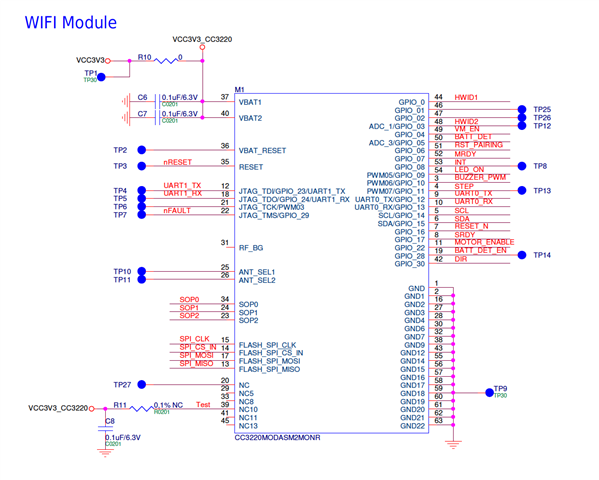Other Parts Discussed in Thread: TIDC-01005, CC2640
Hi,
When we are using tidc-01005 with CC3220/CC2640, and following the guide to build it up then encounter high power issue around 7-8mA.
Originally we though this may BT issue so post here: (You will know more details about this issue)
But know, we found that once CC3220 run SAP_OPEN(), it will let CC3220 waste a lot of power...we have no idea how...and confirm UART pins does't have power leakage...
The customer is using CC3220 TI module and CC2640 launchpad, but still has this issue.
Hopefully we have fix this soon as this block customer MP date.
Schedmatic is here:


